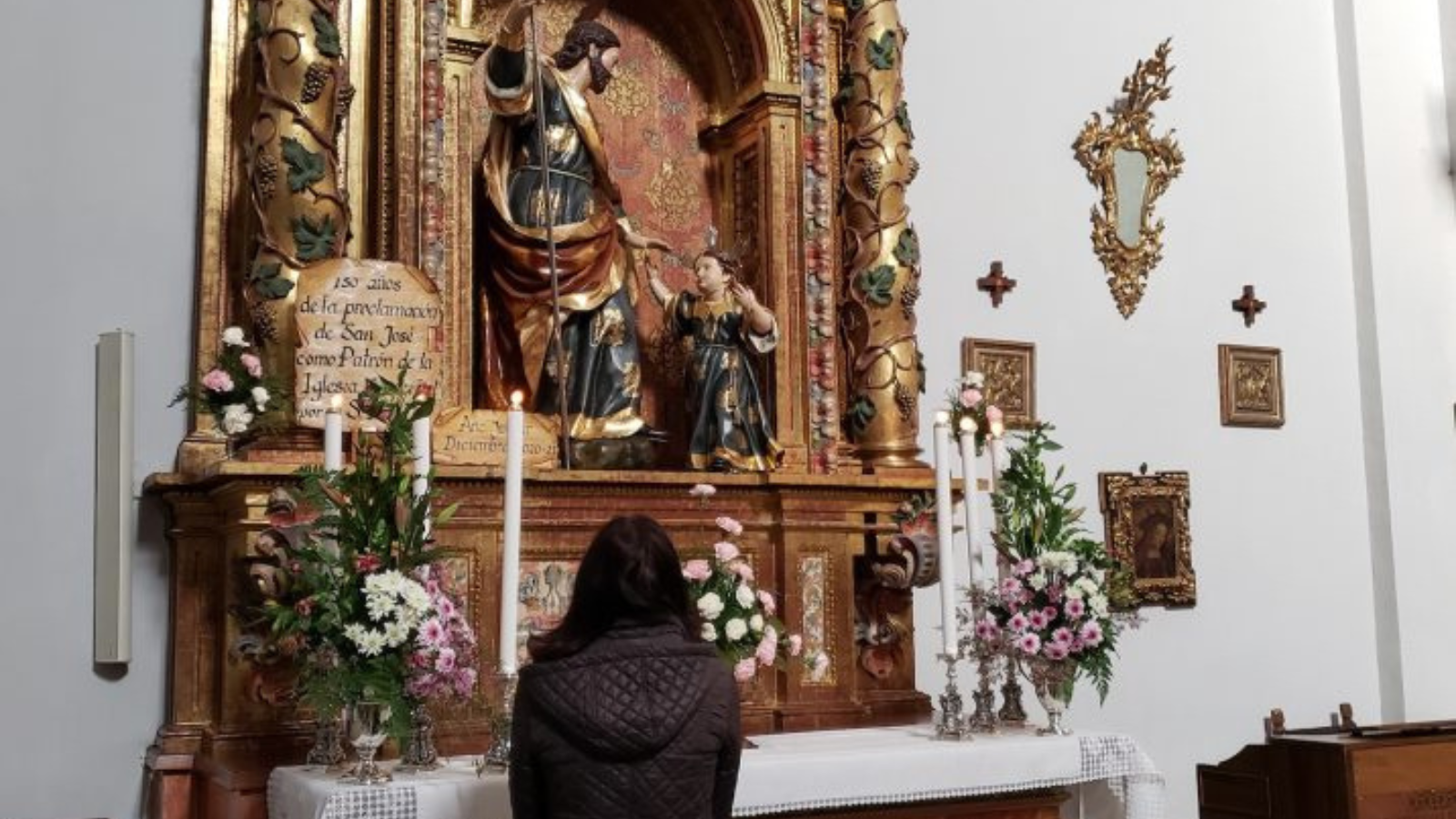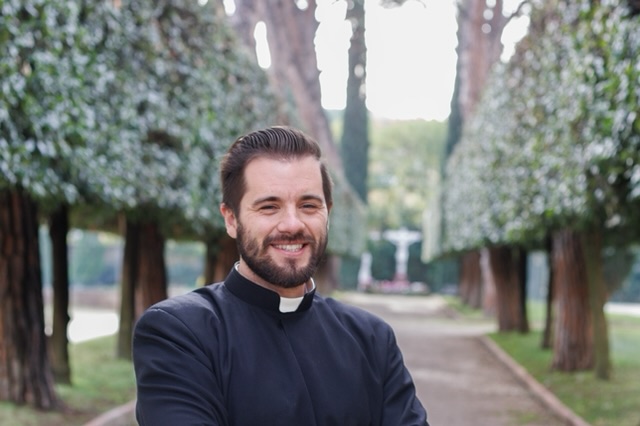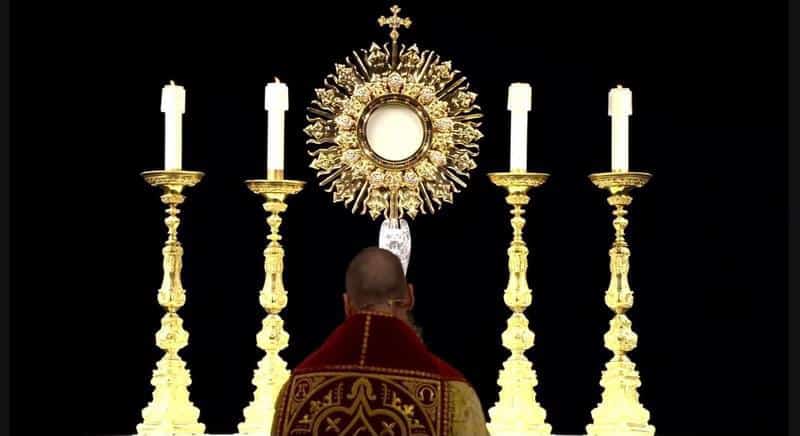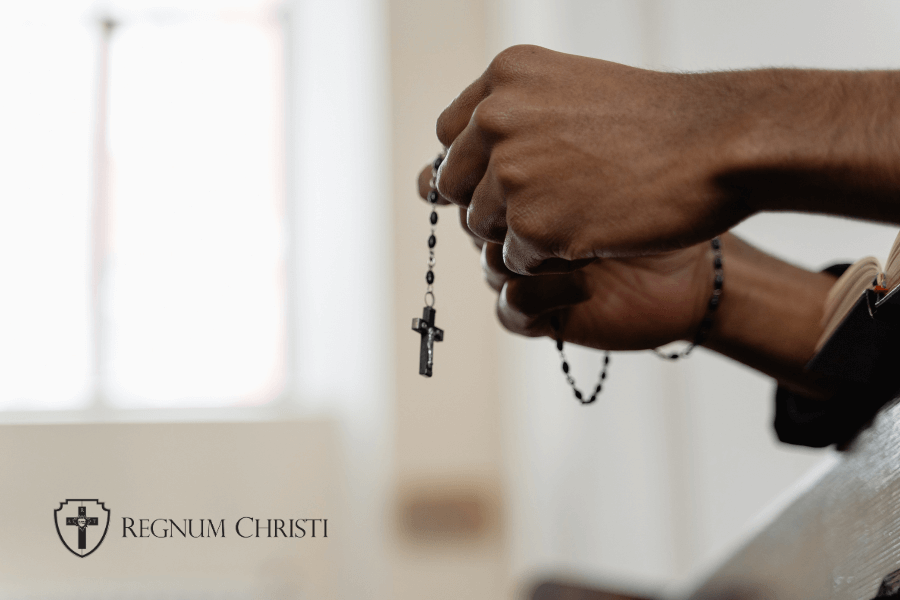Reflections on how the three elements of our laity, consecration and Regnum Christi identity come together within our vocation as Consecrated Women of Regnum Christi.
This is part 5 of a series of 6 blogs where Lisa Small, a Consecrated Woman of Regnum Christi, shares about her 8 day silent retreat in Avila and what St. Teresa of Avila and the current Carmelites living there had to teach her about her own vocation as a lay consecrated woman called to evangelize and sanctify the world through her Regnum Christi spirituality.
“We feel called to live the life that Jesus lived, to ‘incarnate’ his way of life: to “make our own” his way of seeing, of welcoming, of speaking, of listening, of loving. He wanted to establish his dwelling among us and he wants to go among people doing good.”
(CRC 2020 General Assembly Communique #62)
Look up lay consecration in Church documents and you won’t find any solely dedicated to this particular vocation. Yes, there are different documents that explain the vocation of the lay people, and others dedicated to consecrated life in general, or directed towards specific forms of consecrated life, like contemplative orders, secular institutes or consecrated virgins. Vita Consecrata, the most comprehensive document on consecrated life in the Church mentions “New forms of consecrated life now taking their place alongside the older ones bear witness to the constant attraction which the total gift of self to the Lord” (#12). Yet, there is still much to explore and study about the specific spirituality of lay consecration. As mentioned in my first blog in this series, this was precisely the call from our 2020 CRC General Assembly to continue “exploring in greater depth the meaning of the lay aspect of our consecration in order to reach a common understanding that can shed light and order various aspects in the praxis of our life” (#65).
So I turned to the Gospel for light during my retreat as I continued exploring my identity as a Consecrated Woman of Regnum Christi. Our call to live like Christ has always been clear as Regnum Christi members. Yet, Jesus kept leading me to his home in Nazareth to contemplate more his father and mother and their style of life and vocation. And in a special way, I found much light in the way that St Joseph lived his specific vocation as a model for and protector of all vocations. Pope Francis in his Message for the 2021 World Day of Prayer for vocations highlighted the role of St. Joseph in our lives, “Saint Joseph comes to meet us in his gentle way, as one of ‘the saints next door’. At the same time, his strong witness can guide us on the journey.” Christ seemed to want me to sit and meditate on his witness.

St. Teresa had an incredible devotion to St. Joseph and is actually known to have been instrumental in bringing this devotion to the forefront of the Church. In her early years as a contemplative nun, she suffered from a grave illness that left her bedridden for over a year. The best doctors were consulted yet she grew worse and even entered a state of unconsciousness for 4 days where they though she had died. After regaining consciousness, she asked St. Joseph for healing, telling him that she could do more for the Kingdom if she were well. Miraculously, overnight, she was healed and from that moment on, she had recourse to St. Joseph in her remaining years as a nun and reformer.
At prayer one day, she felt our Lord calling her to found a new monastery, observing a more faithful living of her original Carmelite charism. She had a vision of Mary and Joseph standing at the entrance to the monastery which would take the name of St. Joseph and be placed under his protection. St. Teresa thought this would be her only foundation. Yet, she ended up founding another 16 throughout Spain before her death and she entrusted each one in a special way to St. Joseph.
Her trust in St. Joseph was whole-hearted and unwavering. At one moment she wrote, “St. Joseph has never denied me anything I asked of him.” He was protector and provider for her reformation efforts and a friend and mentor in her journey with Christ.
On one of my visits to the Monastery of St Joseph, I began to reflect on my deepening relationship with St. Joseph and understanding of his role in our own spiritual family. As Consecrated Women of Regnum Christi, he is one of our official protectors and little by little he has been quietly making his presence known in our communities and lives, especially in providing for us in our material needs.

So maybe it shouldn’t have been so surprising that the Lord invited me into the humble home of Nazareth to spend significant time with his foster father – contemplating and sharing in the beautiful life that the three of them led for close to thirty years. Although little is written about the ‘hidden life’, it became an incredible place of rich lessons in the continual journey of my retreat as I deepened my own understanding of my vocation as a lay consecrated person. After all – weren’t Joseph and Mary the first Christian icons of lay consecration? And aren’t each of our homes named Domus Mariae (House of Mary) as a reflection of that Domus Mariae in Nazareth?
Joseph and Mary were lay – living an ordinary normal life in the world like any other Nazarene of the time. They dressed the same, worked and did the same household chores like any other Nazarene. They followed the Jewish rhythms and practiced the same customs. There was nothing that they did, said or wore that distinguished them externally as the mother and foster-father of the Messiah.

I contemplated how they lived the evangelical counsels in a very real way, while integrating them with their everyday lives. They lived poverty, owning what they needed and receiving everything from their Heavenly Father as a gift. They knew that even if they lived in a humble home, they were rich in the gift of each other and they were confident that God would provide what they needed for their family and for their vocation. They owned and used material things with a spirit of freedom, and in right order with God the Father’s intentions.
Joseph and Mary both lived obedience to their Heavenly Father through different means. They constantly had hearts open and receptive to however God wanted to communicate to them. They saw his will in the Roman census, they followed God’s voice when he spoke to Joseph while sleeping, and they surrendered to the situations they found themselves in like moving to and from Egypt. “In every situation, Joseph declared his own ‘fiat’, like those of Mary at the Annunciation and Jesus in the Garden of Gethsemane” (Pope Francis, Patris Corde Dec 8, 2020).
And they both clearly committed themselves to a life of celibacy and chastity, being a pure gift to each other and to God at the same time. Their love was total, but centered in and through their son, Jesus. “Joseph is traditionally called a “most chaste” father… Chastity is freedom from possessiveness in every sphere of one’s life. Only when love is chaste, is it truly love… The logic of love is always the logic of freedom, and Joseph knew how to love with extraordinary freedom. He never made himself the center of things. He did not think of himself, but focused instead on the lives of Mary and Jesus.” (Patris Corde Dec 8, 2020).
I sat and pondered, marveling at the harmonious and organic way that they wove together their lay vocation and their consecration. I prayed that my living of my vows within the world, could witness to their life. I contemplated how, even though their belonging to God was not marked by any external sign, the whole town of Nazareth likely knew that there was something very distinctive about each one of them; that in encountering them, people touched God in a special way. During moments of prayer, I imagined entering their home and carpenter workshop, observing how frequently people visited, seeking to receive a kind welcome, word of advice or simply to spend time with these extraordinary people.

In them, I found a blueprint of my own vocation to lay consecration. There are few Church documents that touch on the specific spirituality of lay consecration and it is not always easily understood by people first encountering us. However, there are many examples throughout history who have lived this out such as different men and women throughout the history of the Church who have also lived this out like St Mary Magdalene, St Catherine of Siena and St Rose of Lima to name but a few. But, during these 8 days of prayer, I discovered in a new way a type of guidebook in Domus Mariae Nazareth. Jesus, Joseph, and Mary are incredible models in living out this style of life – being 100% lay, and 100% consecrated. My heart was filled with the joy and privilege I have to be called to such a beautiful vocation.





